Opinion
Valuable Indian lessons on human-elephant conflict
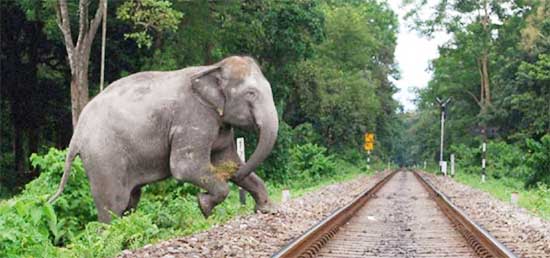
By JAGATH C. SAVANADASA
Email- jaysavana123@gmail.com
It is an absorbing and insightful success story about the management of the most visible and emotional man versus animal conflicts between humans and elephants.
This article examines the methods and techniques deployed at times using modern technology by India, to minimise damage besides conserving elephants and protecting human life.
This is indeed an object lesson on how a huge complex yet powerful nation has achieved success to preserve a large elephant population
This article is culled from a news magazine India Today published weekly, which has a worldwide circulation.
At the centre of the conflict is the ultimate tragedy – the deaths of both humans and the animals.
Briefly, it begins with the encroachment of the elephant habitat by man. This forces these animals to venture out of their forest confines in search of food. The result more often than not is a deadly clash.
In legal and glorified terms it could be called territorial aggrandizement either way by man or elephant.
Of course, there are other relevant factors like the unavailability of water for elephants following persistent droughts, and changing climatic patterns and damage to cultivation by elephants, leading to grain and food shortages for villagers.
But let us begin this narrative with an incident relating to recent elephant deaths in India.
Out of a herd of 13 elephants, seven had died following their contact with a loosely dangling live K.V line in a paddy field in the district of Odisha, due to electrocution. This led to an immediate response, signifying how alert the relevant authorities are in India. An institution named The National Green Tribunal, through a newly formed committee, had examined carefully the actual cause of the tragedy. Following its findings, the committee called on the local power utility to make a deposit of I.R. 1 crore the equivalent of I.R. 10 million, since it held that the deaths of the precious animals were due to apathy and negligence of the utility.
The deposit was to be made to the warden of wildlife.
The Indian elephant population
It is interesting to note that the Indian population of elephants which is between 27,000 and 30,000 is the largest of the species of a single country in Asia, which currently has a population of 40,000. These figures are, however, subject to dispute.
In terms of the deaths of these animals, each year it ranges from 100-120.
In contrast, arising from the conflict between the two, about 1300 people have died in India over the last 4 years.
One reason adduced to this situation, based on research, clearly shows the depletion of forests is the prime factor. Arising from this is the fact that the depletion impels the elephants to search for new habitats, which often go into villages.
Thus there emerges a disastrous situation, the Indian report opines.
On the other hand, “India Today” contends that her elephant population has stabilized, and that it is not the human- elephant combat that is at the heart of the issue but the destruction of forests.
Mega herbivores
Elephants are a large migratory species. It is reported to have a travel range of approximately 150-350 sq. kilometers annually.
Elephants also have, on the basis of their huge body proportions, an equally huge appetite and in order to satisfy their needs, they target fields and plantations nearby their usual habitats. Each elephant consumes on an average 150 kg of food and 200-300 litres of water daily.
Quite often one could see, in the media, these lovable creatures in desperate search of food, making forays into places outside their usual domain, only to be mowed down by rail. One could also see pictures of men lying on the ground killed by elephants when they enter fields.
Evidence in India, as much as in Sri Lanka, the latter to a limited extent points to the fact that it is mainly development projects such as roads and transmission lines, apart from mines and dams that make great inroads into the elephant habitat and disrupt their life patterns.
Additionally in India a big canal in extent 16 km for a hydro-electricity project in Uttarakhand resulted in paving the way to destroying an existing elephant boundary. Adding fuel to this problem, is the open border between India and Nepal, only for humans.
Elephants are kept out of it through a 17 k.m fence. The Indian elephant population, the article reveals, had been subject to forced migration due to rampant mining activity in Odisha. Such activity had begun in the 1980s and as a result today about 300 elephants are relocated within 30000 Sq Km of forest in Chhattisgarh. Similar changes have been carried out in Jharkhand and every year about 150 elephants are moved into this territory.
A local terrorist group called Bodo, which was active for about a decade in the 1980s, had led to the death of about 100 elephants annually from 1980-1990.
Project Elephant
In 1992 India introduced the Project Elephant plan incorporating Elephant Reserves. Conceptually the plan was designed to create Elephant Reserves that should encounter minimum resistance from the local populace. 30 such reserves are in existence today, and their combined land area is approximately 60,000 SQ Km.
Significantly this has led to impressive results. In the last 37 years the elephant population doubled to 30,000 on the basis of a 2017 census.
However a resultant major issue is the presence of a big elephant population in areas that cannot support them.
Habitat Management
India, in the manner of Sri Lanka, though ours is of a lesser magnitude, considers habitat management a formidable task. Though India has identified some 160 odd elephant corridors (which unlike Sri Lanka) includes 17 international corridors between India and Bangladesh, Bhutan, Myanmar and Nepal, all inter-connected nations of course on one or single land mass. Only these 17 are considered a safe passage for elephants.
They are spread over an area of 1600-2000 Sq km. but in terms of area only about 600 to 800 Sq km’s are genuinely safe areas.
Poaching
Poaching in India is severely curtailed, thanks to remedial action and also due to shortage of tuskers. This menace is likely to return once the elephants born in the 1980s would have grown tusks.
Also, according to the Wildlife Institute of India (W.I.I) the population of elephants need monitoring scientifically. Especially, the mother-to-calf ratio, or the number of breeding cows per 100 specimens
However, it needs to be mentioned that policies applied in respect of tiger conservation, which India carried out successfully, cannot be applied to elephant conservation. The rationale is that you could keep tigers within their reserves, but this is not possible in case of elephants.
But in certain areas of India a degree of success has been achieved, and inviolate habitats for elephants are created by moving human populations outside the areas reserved for elephants.
New conservation measures
An innovation that seems successful is the installation of bio-acoustics based sensors along rail tracks in Assam and West Bengal. It is reported that these sensors are able to track the sounds arising from elephant movement and transmit them to a control centre. As a result 10 drivers could initiate evasive action.
Bio-acoustics are already utilized in the oceans which monitor movement of whales and dolphins. The objective is to prevent them from swimming onto ships and other sea borne vessels .
Professor Michael Andrew of the University of Catalina, Spain a global expert in Bio Acoustics who is responsible for its introduction to India, calls this a major breakthrough. He adds passive acoustics technology offers a unique opportunity to balance human interests and wildlife conservation, but another view notes that sensors are just one way to detect the presence of elephants. In other words it is just a tool. According to a leading Indian expert Prof. Raman Sukumar of the Indian Institute of Science, sensors need to be supplemented with other techniques.
Despite a few drawbacks, one could visualize the coherent and cogent policies India has applied in preventing elephant deaths and also minimizing damage in this seemingly intractable conflict between man and elephant.
Opinion
Turning Trade Disruptions into Opportunities
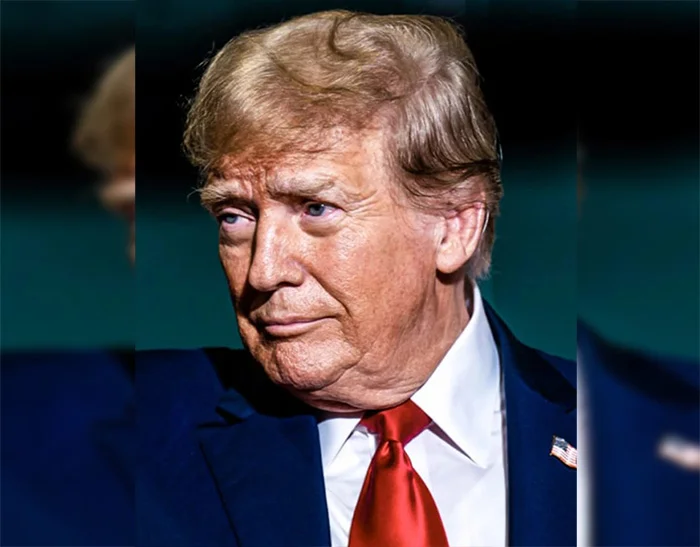
The silver lining of US tariffs for emerging economies:
 In a world that thrives on interconnectedness, the imposition of U.S. tariffs has been widely discussed through the lens of negativity—trade wars, disrupted supply chains, and market turbulence. However, this narrow view fails to account for the opportunities that arise from such disruptions. While it’s easy to focus on the immediate challenges—rising costs, retaliatory measures, and financial volatility—emerging economies, especially those in Asia and South Asia, are beginning to see a silver lining.
In a world that thrives on interconnectedness, the imposition of U.S. tariffs has been widely discussed through the lens of negativity—trade wars, disrupted supply chains, and market turbulence. However, this narrow view fails to account for the opportunities that arise from such disruptions. While it’s easy to focus on the immediate challenges—rising costs, retaliatory measures, and financial volatility—emerging economies, especially those in Asia and South Asia, are beginning to see a silver lining.
The very disruptions caused by U.S. tariffs can open up pathways for growth, innovation, and strategic realignment. Rather than being passive victims of global trade tensions, countries like Sri Lanka can leverage these moments of upheaval as catalysts for economic renewal, stronger international partnerships, and greater resilience in the face of future global shifts. The silver lining of U.S. tariffs, therefore, lies in how emerging economies can transform these challenges into lasting opportunities for economic development and regional integration.
Traditionally seen as a blunt economic tool, tariffs have made a comeback, especially during and after the Trump administration. While much attention has focused on the negative impacts of tariffs—such as trade slowdowns, retaliatory tariffs, and market volatility—this view overlooks some of the potential positive outcomes, especially in the longer term. This article will explore the opportunities created by U.S. tariffs, particularly for emerging economies like Sri Lanka.
What Are Tariffs and Why Are They Imposed?
Tariffs are taxes placed on imported goods, making them more expensive for consumers. The United States has used tariffs as a way to address trade imbalances, protect domestic industries, and assert its influence on the global stage. For example, tariffs on steel and aluminum were meant to safeguard American manufacturing jobs, while tariffs on Chinese goods were part of broader efforts to correct trade deficits with China and challenge unfair trade practices.
The Immediate Consequences
of U.S. Tariffs
When tariffs are imposed, the immediate effects are usually negative for global trade. Countries that rely on exporting to the U.S. face reduced demand for their goods, which can lead to financial losses. Markets may experience increased volatility, stock prices may drop, and inflation could rise, especially in countries dependent on global supply chains.
For instance, countries like China have retaliated with their own tariffs, leading to a “trade war” that has disrupted global supply chains. As a result, businesses face higher costs and reduced profits, which can also affect consumers who pay more for goods.
The Longer-Term Effects: Economic Reshaping
Although tariffs create challenges, they also lead to changes that could benefit certain economies in the long run. For example, trade wars often force countries to rethink their supply chains. In response to U.S. tariffs, many multinational companies started seeking alternatives to China for manufacturing. This shift, known as the “China +1” strategy, has led to countries like Sri Lanka, Vietnam, and India seeing a rise in foreign investment and a growing role in the global supply chain.
Sri Lanka, with its strategic location and competitive labor costs, has become an attractive destination for businesses looking to diversify their production outside of China. Sri Lanka’s exports, such as tea and apparel, have seen increased demand as companies move their operations to places less affected by tariffs. This shift creates opportunities for countries like Sri Lanka to boost their industrial sectors, attract foreign capital, and integrate into regional trade networks.
The Role of Financial Volatility
One of the immediate reactions to tariffs is financial volatility, as global markets try to adjust to the uncertainty caused by trade conflicts. While this often results in market instability, financial volatility can also serve as a catalyst for broader economic reforms. In times of crisis, countries may be forced to improve their fiscal policies, strengthen their institutions, and diversify their economies.
For example, countries in the emerging world may use the pressure from tariffs to undertake structural reforms that make their economies more resilient. They may improve fiscal governance, attract more investment, and create a more diversified and stable economy. Over time, this can reduce their dependence on any single trading partner and help them weather future economic shocks.
Opportunities for Emerging Economies
Although U.S. tariffs present challenges for emerging economies, especially those that depend on exports to the U.S., they also provide opportunities for strategic realignment. With companies looking for alternatives to China, emerging economies can reposition themselves as attractive investment destinations.
Sri Lanka, for instance, has benefited from this shift in the global supply chain. As businesses look for stable alternatives to Chinese manufacturing, Sri Lanka has seen an increase in demand for its exports, such as textiles and tea. Additionally, foreign direct investment (FDI) in Sri Lanka has been growing, with companies looking to set up production facilities in countries that are less affected by tariff measures.
This shift is not just about attracting investment but also about repositioning a country within regional supply chains. Sri Lanka has the potential to become a key player in the Indian Ocean region, connecting Asia with Europe and Africa. By improving infrastructure, such as ports and digital networks, Sri Lanka can better integrate into global value chains and increase its export capacity.
Sri Lanka’s Response
to Global Shifts
For Sri Lanka, the global effects of U.S. tariffs present both a challenge and an opportunity. The country is currently dealing with debt restructuring, fiscal deficits, and economic instability. However, these global disruptions can be leveraged as a platform for domestic renewal.
Sri Lanka’s response to these shifts includes diversifying its export markets. By increasing trade with other regions, such as Southeast Asia, India, and the EU, Sri Lanka can reduce its reliance on any one country or market. Regional trade agreements like the South Asian Free Trade Area (SAFTA) can help strengthen Sri Lanka’s position in the global market and protect it from the volatility of global trade wars.
Additionally, Sri Lanka has used these global shifts as an opportunity to undertake important fiscal reforms. These reforms, including improving fiscal governance and enhancing investor confidence, can help the country become more resilient in the long term. By addressing internal structural issues, Sri Lanka can better navigate global economic shifts and position itself for sustainable growth.
The Role of Technology and Digitalisation
Technology plays an essential role in Sri Lanka’s strategy to capitalise on global economic changes. The digital transformation of industries, driven in part by U.S. tariffs and trade disruptions, opens new avenues for economic development. For example, Sri Lanka’s growing IT sector, combined with advancements in e-commerce and digital infrastructure, allows the country to offer a variety of services to global markets, including financial services, software development, and education.
By investing in digital infrastructure and embracing new technologies like artificial intelligence and automation, Sri Lanka can position itself as a leader in the regional digital economy. This technological upgrade can help Sri Lanka integrate more deeply into global value chains, boosting exports and creating new economic opportunities. Possible benefits from US tariffs include,
Short-Term Benefits
* Diversified Exports: Emerging economies gain market share by offering alternatives to Chinese products.
* Increased Demand: Tariffs on China boost demand for products from other regions.
* Boost in FDI: Countries attract more foreign investments as supply chains shift.
* Lower Competition: Protectionist measures reduce competition for domestic industries.
Medium-Term Benefits
* Industrial Upgrading: Local industries modernise, innovate, and become more productive.
* Policy Reforms: Financial instability prompts improvements in governance and policies.
* Supply Chain Integration: Economies join more resilient and diversified global supply chains.
* Regional Trade: Strengthened trade partnerships with neighbouring countries and regional organisations.
Long-Term Benefits
* Structural Growth: Policy changes create a more resilient and diversified economy.
* Technological Advancements: Focus on innovation positions economies as leaders in new industries.
* Geopolitical Influence: Adaptation to global changes boosts regional and international influence.
* Better Positioning in Global Value Chains: Emerging economies align with evolving global demands, securing a stronger role in global trade.
A Turning Point for Emerging Economies
While U.S. tariffs initially cause economic disruption, they can also serve as a wake-up call for emerging economies like Sri Lanka. By diversifying trade relationships, investing in technology, and undertaking necessary structural reforms, countries can turn these challenges into long-term growth opportunities. The global shifts triggered by U.S. tariffs provide a unique opportunity for countries like Sri Lanka to reinvent their economic models, enhance their resilience, and position themselves as key players in the evolving global economy.
In this era of trade wars and economic realignments, smaller nations no longer need to simply weather the storm. With the right policies, proactive strategies, and a focus on innovation, countries like Sri Lanka can not only survive the disruptions caused by U.S. tariffs but thrive in the new economic landscape.
(The writer, a senior Chartered Accountant and professional banker, is Professor at SLIIT University, Malabe. He is also the author of the “Doing Social Research and Publishing Results”, a Springer publication (Singapore), and “Samaja Gaveshakaya (in Sinhala). The views and opinions expressed in this article are solely those of the author and do not necessarily reflect the official policy or position of the institution he works for. He can be contacted at saliya.a@slit.lk and www.researcher.com)
Opinion
Friendship with all, but India is No.1
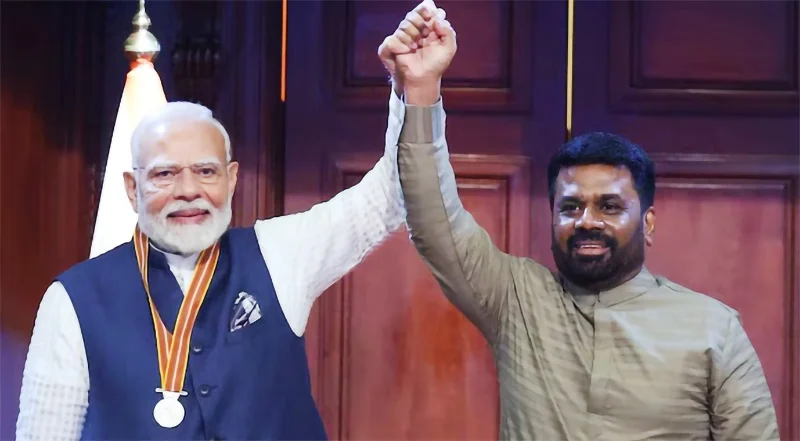
The government did everything in its power to welcome Indian Prime Minister Narendra Modi during the three days in April 4-6 he was in Sri Lanka. The country is known for its hospitality and the government exceeded expectations in its hospitality. There were children to greet the prime minister at the airport along with six cabinet ministers. There was a large banner that described the Indian prime minister in glowing terms. President Anura Kumara Dissanayake also conferred the Sri Lanka Mitra Vibhushana Award, the country’s highest award, to Prime Minister Modi in appreciation of friendship and cooperation. The role that the Indian government under him played in saving Sri Lanka from economic disaster three years ago would merit him nothing less. The gesture was not merely humanitarian; it was also an astute expression of regional leadership rooted in a philosophy of “neighbourhood first,” a cornerstone of Prime Minister Modi’s foreign policy.
India has a key role to play as a stabilising actor in South Asia, especially when regional neighbours falter under economic or political pressure. It has yet to reach its full potential in this regard as seen in its relations with Pakistan and Bangladesh. But with regard to Sri Lanka, India has truly excelled. Prime Minister Modi’s visit to Sri Lanka at this time carried symbolic weight beyond the economic and political. President Dissanayake, in his welcome speech, noted that Prime Minister Modi was the first foreign leader to visit after the new government came to power. By being the first to visit he conferred international importance to the newly elected Sri Lankan leaders. This early gesture conveyed India’s tacit endorsement of President Dissanayake’s government, an endorsement that can be especially valuable for a leader without a traditional elite background. The president also remarked on their shared political origins as both originally came into politics as outsiders to the traditional ruling establishments, creating a bridge between them that hinted at a broader ideological compatibility.
President Dissanayake showed his human touch when he first showed the Mitra Vibushana medal to Prime Minister Modi in its box, then took it out and placed it around the neck of the Indian leader. When the two leaders clasped their hands together and raised them, they sent a message of camaraderie and solidarity, an elder statesman with a long track record with a younger one who has just started on his journey of national leadership. Interestingly, April 5 the date on which the award was conferred was also the 54th anniversary of the commencement of the JVP Insurrection of 1971 (and again in 1987), in which anti-India ideology was a main feature. In making this award, President Dissanayake made the point that he was a truly Sri Lankan leader who had transcended his political roots and going beyond the national to the international.
FINDING TRUST
Six of the seven agreements signed during the visit focused on economic cooperation. These ranged from renewable energy initiatives and digital governance platforms to infrastructure investments in the plantation sector. Particularly noteworthy were agreements on the construction of homes for the descendants of Indian-origin Tamils and the installation of solar units at 5000 religious sites. Both these projects blend development assistance with a careful sensitivity to identity politics. These initiatives align with India’s strategic use of development diplomacy. Unlike China’s approach to aid and infrastructure which has been frequently critiqued for creating debt dependencies India’s model emphasises partnership, cultural affinity, and long-term capacity building.
The seventh agreement has to do with defence and national security issues which has been a longstanding area of concern for both countries. None of the agreements, including the seventh, have been discussed outside of the government-to-government level, though texts of the other six agreements were released during Prime Minister Modi’s visit. Several of the issues concerning economic agreements have been in the public domain eliciting concerns such as the possibility of personal information on Sri Lankan citizens being accessible to India through the digitisation project. However, little is known of the defence agreement. To the extent it meets the needs of the two countries it will serve to build trust between them which is the foundation on which dialogue for mutually beneficial change can take place.
In the past there has been a trust deficit between the two countries. Sri Lankans would be mindful of the perilous security situation the country faced during the time of the war with the LTTE and other Tamil militant organisations, when parts of the country were taken over and governed by the LTTE and the country’s territorial integrity was at stake. This was also a time when Indian military aircraft were deployed in Sri Lankan airspace without the Sri Lankan government’s consent in June 1987, which the Indian government justified as a humanitarian measure, and there were concerns about possible Indian military intervention on a larger scale. This was followed by the signing of the Indo-Lanka Peace Accord the next month in July 1987 which led to the induction of the Indian army as a peacekeeping force into Sri Lanka with government consent.
UNRESTRICTED FRIENDS
The history of Indian intervention in Sri Lanka’s ethnic conflict has given an impetus to Sri Lanka to look to other big powers to act as a counterbalance to India. In more recent years India has expressed its concern at naval vessels from China coming into Sri Lankan waters on the grounds of doing research which could be used against India. Sri Lanka’s engagement with China has strained ties with India, particularly when Chinese infrastructure investments, such as the Hambantota Port, appears to have the potential to serve dual civilian-military purposes. Given China’s growing global reach and its ambition to project influence through the Belt and Road Initiative, Sri Lanka’s geography makes it a critical hub in the Indian Ocean. Hopefully, with the signing of the defence agreement between India and Sri Lanka, these fears and suspicions of the past will be alleviated and soon come to an end.
The position that the government headed by President Dissanayake has taken is to be friends with all. The principle of “friendship with all, enmity with none” is not new, but the stakes are higher today, as global competition between major powers intensifies. India, by virtue of geography and history, will always be Sri Lanka’s first and most important partner. It was India, and not China, not the West, that provided an emergency economic lifeline when Sri Lanka’s foreign reserves evaporated in 2022. That support, amounting to over $4 billion in credit lines and direct aid, was delivered quickly and with minimal conditionality. It also demonstrated how regional proximity can enable faster, more context-aware responses than those offered by multilateral institutions.
The world has become a harsher and more openly self-interested one for countries, even ones that were thought to have indissoluble bonds. Sri Lanka’s biggest export markets are in the United States and European Union and it has received large amounts of economic assistance from Japan and China, though unfortunately some of the loans from China were used inappropriately by former Sri Lankan governments to create white elephant infrastructure projects. Burdened now with enormous debt repayments that bankrupted it in 2022, Sri Lanka continues to need economic resources and markets from around the world. President Dissanayake’s government will understand that closeness to India need not mean an exclusive relationship with it alone. In a multipolar world, friendship (and doing business) with all is both a virtue and a necessity. But among friends, there must always be a first —and for reasons of history, culture, religion, geography and strategic logic, that will be India.
by Jehan Perera
Opinion
Power corrupts …
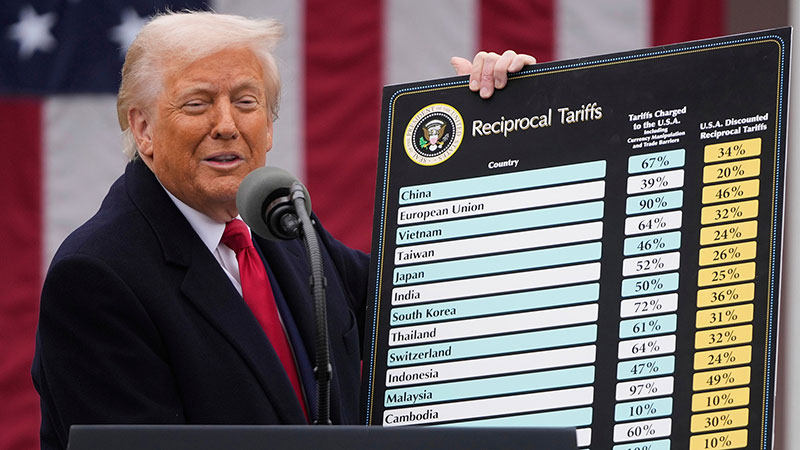
Only America could re-elect an extremist like Trump.
There are planned protests across the US today against President Donald Trump and his adviser billionaire Elon Musk.
More than 1,200 “Hands Off!” demonstrations have been planned by more than 150 groups – including civil rights organisations, labour unions, veterans, fair-election activists and LGBT+ advocates.
This includes a planned protest at the National Mall in Washington as well as locations in all 50 states.
They are in opposition to Trump’s actions: slashing the federal government, his handling of the economy and other issues.
Musk has played a key role in Trump’s second administration, leading efforts to downsize the federal government as head of the newly created Department of Government Efficiency.
Organisers hope these demonstrations will be the largest since Trump came to office.
Speaking of Musk, let’s see how Trump’s second term has impacted America’s richest men …?
Countries across the globe are planning their response, or lack thereof, to Donald Trump’s tariffs.
China responded to Trump’s 34% tariff with its own levy of the same percentage on US imports.
According to state news agency Xinhua, China has accused the US of using tariffs “as a weapon” to suppress Beijing’s economy.
The country’s foreign ministry added that the US should “stop undermining the legitimate development rights of the Chinese people”.
It also warned there were no winners from and no way out for protectionism.
China also claimed that the US tariffs violated World Trade Organization rules – rules it itself has broken a number of times.
Professor Wang Wen, trade expert at the Chongyang Institute for Financial Studies, spoke from Beijing to Kamali Melbourne. He outlined why he believed the tariffs would eventually benefit China, and why Beijing would “never yield” to the US president.
“The basic strategy of China’s tariff policy against Trump is to count on reciprocal rules and defend China’s national interest and dignity. China will never yield to Trump on the issue of tariff war,” he said.
However, Xi Jinping is no democratic leader either, given to expansionism by hook or crook.
China’s booming economy has opened up many opportunities to achieve its sinister objectives – massive investments which weaker economies fall into and become easy prey.
Sri Lanka is no exception. Caught in the middle are the smaller nations who are confused and worried how best to stay alive.
Sunil Dharmabandhu
Wales, UK
-

 Business2 days ago
Business2 days agoColombo Coffee wins coveted management awards
-

 Business4 days ago
Business4 days agoDaraz Sri Lanka ushers in the New Year with 4.4 Avurudu Wasi Pro Max – Sri Lanka’s biggest online Avurudu sale
-

 Features3 days ago
Features3 days agoStarlink in the Global South
-
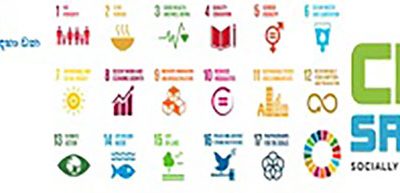
 Business5 days ago
Business5 days agoStrengthening SDG integration into provincial planning and development process
-
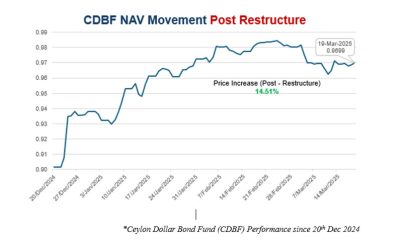
 Business4 days ago
Business4 days agoNew SL Sovereign Bonds win foreign investor confidence
-
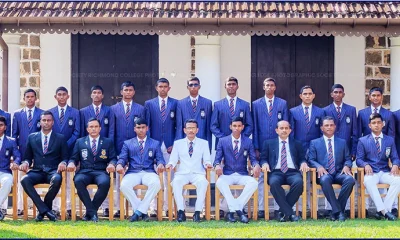
 Sports6 days ago
Sports6 days agoTo play or not to play is Richmond’s decision
-
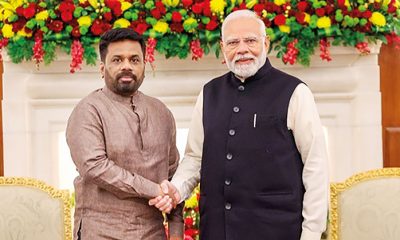
 Features3 days ago
Features3 days agoModi’s Sri Lanka Sojourn
-

 Sports5 days ago
Sports5 days agoNew Zealand under 85kg rugby team set for historic tour of Sri Lanka











